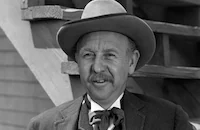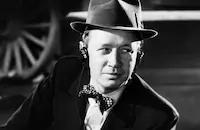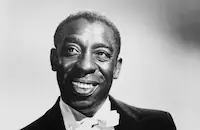Without Love

Brief Synopsis
Cast & Crew
Harold S. Bucquet
Spencer Tracy
Katharine Hepburn
Lucille Ball
Keenan Wynn
Carl Esmond
Film Details
Technical Specs

Synopsis
During World War II, Pat Jamieson, a lovelorn scientist from Chicago, travels to Washington, D.C. to work on a secret project to develop a high altitude oxygen helmet for the War Department. Pat is a stranger to Washington, but he soon finds a temporary home for himself and his cairn terrier, Dizzy, through a chance acquaintance with a drunken man named Quentin Ladd. Quentin takes Pat to his cousin Jamie Rowan's elegant house on Connecticut Avenue and casually invites him to stay the night. The next morning, Quentin finds Pat tinkering with some scientific instruments in the basement of the house and realizes that his guest intends to stay. During the course of the day, Pat learns from Quentin that Jamie is a lonely and unhappy woman, and that she is trying to sell the house. Pat wants to use the basement as his laboratory but because he insults Edwina Collins, Quentin's overbearing and snobbish fiancée, he is asked to leave the house at once. On his way out, Pat meets Jamie, who mistakes him for an applicant seeking a job as a caretaker at the house. Thinking fast, Pat feigns interest in the job and uses his unique charm to win Jamie's approval. Pat's ruse is exposed, though, when Edwina discovers that he is a respected scientist, as well as the son of a well-known scientist. When Jamie realizes that her father and Pat's father were old friends, she drops her cold indifference toward him and invites him to stay in her home. Pat insists on a strictly professional arrangement, as caretaker, but Jamie soon takes a personal interest in him. As Jamie and Pat become better acquainted, they realize that they share a distaste for the romantic notion of love, having both been hurt by past experiences. One day, Kitty Trimble, Jamie's hard-boiled business manager, shows the house to Paul Carrell, a prospective buyer, who, by coincidence, is an old friend of Pat. Paul flirts with Jamie, and Jamie later admits to Pat that Paul's visit has had a strange effect upon her. After deciding that she must stop living in the past, Jamie, emboldened by her new outlook on life, proposes marriage to Pat. She insists, however, that theirs should be a marriage uncomplicated by love and based entirely on trust, companionship and humor. Pat accepts Jamie's proposal, and they develop a Platonic relationship, deliberately devoid of intimacy. They also develop a professional relationship when Jamie begins to assist Pat in his experiments. Some time later, Paul privately questions Jamie about her marriage, accusing her of entering a loveless union, then plants a kiss on her. Jamie angrily protests the kiss and, in so doing, blurts out that she loves Pat. The sudden realization that she is in love prompts Jamie to follow Pat to Chicago, where he is about to give his first official presentation of his oxygen mask. The demonstration is a success, but a series of jealous misunderstandings results in Jamie's early return to Washington. While Pat remains in Chicago for a few days, Jamie meets Pat's French ex-girl friend and tries to adopt her seductive style to impress Pat when he returns. Pat does not appreciate the change in Jamie's behavior, but when he confesses that he is in love with her, she reverts to her old self and gives Pat a big hug.

Director

Harold S. Bucquet
Cast

Spencer Tracy

Katharine Hepburn

Lucille Ball

Keenan Wynn

Carl Esmond

Patricia Morison

Felix Bressart
Emily Massey

Gloria Grahame
George Davis
George Chandler
Clancy Cooper
Wallis Clark

Donald Curtis

Charles Arnt

Eddie Acuff

Clarence Muse
Franco Corsaro
Ralph Brooke
William Forrest
Garry Owen
Joe Devlin
William Newell

James Flavin
Rommy, A Cairn Terrier
Crew
Peter Ballbusch
Edward Baravalle
Pierre Bayle
Gaston Claret
Claude Debussy
Peter P. Decker
Joe Edmondson
James Z. Flaster
Karl Freund
Cedric Gibbons
A. Arnold Gillespie
Jakob Gimpel
Danny Hall
Irene
Bronislau Kaper
Marion Herwood Keyes
Standish J. Lambert
Harry Mcafee
Earl Mcevoy
M. J. Mclaughlin
Mclean Nisbet
Douglas Shearer
Robert W. Shirley
Harkness Smith
Newell Sparks
Herbert Stahlberg
William Steinkamp
Michael Steinore
Donald Ogden Stewart
Walter Strohm
Frank Sullivan
Lawrence Weingarten
John A. Williams
Edwin B. Willis

Photo Collections
Videos
Movie Clip


Trailer
Film Details
Technical Specs

Articles
Without Love
After the failure of Keeper of the Flame, Hepburn persuaded MGM to buy the film rights to Without Love for her and Tracy. The film version of Without Love (1945) finally made it to the screen after the stars had finished their commitments to do other films. The setting of Without Love is Washington, D.C., which had a severe housing shortage during World War II because of the influx of people doing war-related work. Tracy plays one of those people, a scientist, who finds the housing he needs in the home of Hepburn, a widow. For the sake of propriety, the couple embarks on a platonic marriage, and spends the rest of the film falling in love. The screenplay was by Donald Ogden Stewart, who had won an Academy Award for his screen adaptation of The Philadelphia Story (1940).
The reviews for Without Love, while not ecstatic, were generally good. The New Yorker called it "a very witty and engaging picture, recommended here without hesitation." The stars came in for their share of praise, but it was two of the supporting players who got the best reviews, and, according to some, stole the show. Keenan Wynn, a New York stage actor (and the son of comedian Ed Wynn), had minor roles in a few films. Hepburn and Tracy were familiar with his theater work, and arranged for him to test for a featured role as Hepburn's cousin in Without Love. It was one of Wynn's first films, and the one that got him noticed.
Lucille Ball knew Hepburn from their RKO days. Ball had a small but juicy role in Hepburn's Stage Door (1937), and had been under contract at MGM for several years, with little to do. Ball's role in Without Love as the wisecracking real estate agent was a welcome change of pace. "It is good to see Lucille Ball doing so well with a kind of role new to her," wrote James Agee in The Nation. It was also amazing, considering the turmoil of Ball's private life at the time. The morning she began work on Without Love, Ball went to court to sue Desi Arnaz for divorce. The charge was the usual mental cruelty, but the real reason was Arnaz's well-known roving eye. The couple eventually reconciled, just after Ball picked up her interlocutory decree.
A professional relationship was also developing for Ball on the Without Love set. The film's cinematographer, Karl Freund, had photographed Ball's first MGM (and first color) film, Du Barry was a Lady (1943). Freund, whose long career stretched back to 1907 in Germany, and included a stint as a director at Universal, had settled at MGM as a cinematographer in 1935. Years later, when Ball and Arnaz were planning their television series, I Love Lucy, in 1951, they wanted to shoot it with three cameras simultaneously, which had never been done before. Remembering Freund's innovative work, they hired him as director of photography for the show. Freund invented an overhead lighting system that made shooting with three cameras possible.
Director: Harold S. Bucquet
Producer: Lawrence A. Weingarten
Screenplay: Donald Ogden Stewart, from the play by Philip Barry
Cinematography: Karl Freund
Editor: Frank Sullivan
Costume Design: Irene
Art Direction: Cedric Gibbons, Harry McAfee
Music: Bronislau Kaper
Principal Cast: Spencer Tracy (Pat Jamieson), Katharine Hepburn (Jamie Rowan), Lucille Ball (Kitty Trimble), Keenan Wynn (Quentin Ladd), Carl Esmond (Paul Carrell), Patricia Morison (Edwina Collins), Felix Bressart (Professor Grinza), Emily Massey (Anna).
BW-111m. Closed captioning.
by Margarita Landazuri

Without Love
Quotes
Trivia
Notes
A May 1942 Hollywood Reporter news item indicates that M-G-M purchased the film rights to Philip Barry's play for $265,000. The original New York run of the play starred Elliott Nugent and Katharine Hepburn, who reprised her stage role for this film. Hollywood Reporter news items in September 1943 indicate that production on the film, which was originally set to begin before November 1943, was postponed due to the unavailability of Hepburn and director Harold S. Bucquet, who were both involved in the production of the film Dragon Seed. Hollywood Reporter production charts list actor Robert L. Hartzell in the cast, but his appearance in the released film has not been confirmed. Without Love was one of the top grossing films of 1945. Rommy, the cairn terrier in the film, also appeared with Hepburn in the 1946 M-G-M film Undercurrent. Without Love was the final picture of director Harold S. Bucquet, who died of cancer in 1946. Bucquet began his film career directing shorts, and directed his first feature film, for M-G-M, in 1938.

Miscellaneous Notes
Released in United States Spring May 1945
Released in United States Spring May 1945














